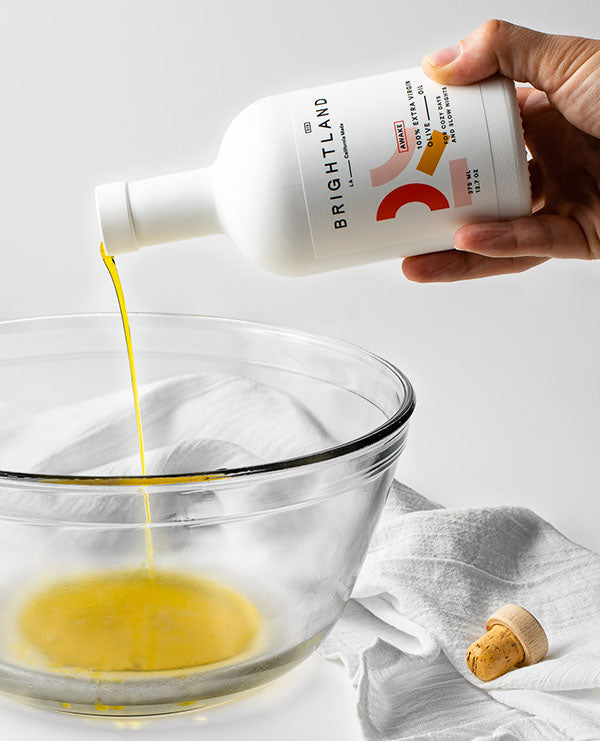[open type="rte"]
Peanut is one of the latest additions to the ever-more-crowded cooking oil aisle in the grocery store. If you are like most shoppers, you are probably wondering how peanut oil is made and how much it resembles the delicious nut. (Sadly, the answer is: not much.) Read on to learn more about the difference between olive oil vs. peanut oil so you can decide which cooking oil you should stock in your home pantry.
[close type="rte"][open type="images" small="true"]

[close type="images"][open type="rte"]
Olive Oil vs. Peanut Oil: Flavor
Peanut oil and olive oil have very distinct tastes. From the name, you might think that peanut oil has a very nutty, savory flavor similar to sesame oil. However, this is not the case. Peanut oil is made from the edible seeds of the peanut plant and, in most cases, heavily refined afterwards in order to produce a light-colored, neutral flavored oil.
In some rare situations, you can find cold pressed peanut oil, which has not been refined and thus has more of a nutty flavor. That being said, most of the peanut oil you will find in the grocery store has been refined and thus lacks flavor. Cold pressed peanut oil is something of a specialty product and can be expensive and difficult to find, given that peanut oil itself is already not in as much demand as are other oils. Some peanut oils are mixed with other cheaper oils, such as vegetable oil, which further dilutes the flavor.
On the other hand, extra virgin olive oil has a very distinctive taste that varies depending on what varieties of olives are used. Olive oil may be grassy, peppery, bitter or some combination thereof. It has a very distinct taste and smell that is impossible to consider with another oil. For the most concentrated flavor, opt for an extra virgin olive oil that has not been refined or treated in any way — and you can always try flavored olive oils when you are ready to take things to the next level.
[close type="rte"][open type="images" small="true"]

[close type="images"][open type="rte"]
Olive Oil vs. Peanut Oil: Health Benefits
Olive oil and peanut oil offer somewhat different health benefits. They both contain polyunsaturated and monounsaturated fats, a.k.a. the healthy fats. However, olive oil contains a more even balance of these two kinds of fats, while peanut oil has more monounsaturated fats. Peanut oil also has a higher quantity of saturated fat, which is less desirable, than olive oil does.
As for vitamins and minerals, both olive oil and peanut oil contain vitamin E. However, olive oil also contains additional healthy compounds, including other vitamins, antioxidants, polyphenols and more. As a result, olive oil offers more well-rounded health benefits than peanut oil does.
[close type="rte"][open type="rte"]
Olive Oil vs. Peanut Oil: Frying
Due to its highly refined nature, peanut oil has a slightly higher smoke point than unrefined extra virgin olive oil. However, this difference is not that significant. Refined peanut oil has a smoke point of about 450 degrees Fahrenheit, while extra virgin olive oil has a smoke point of about 410 degrees Fahrenheit at its freshest. Most home cooking situations rarely require a frying temperature above 400 degrees Fahrenheit, so either oil will be suitable for that.
[close type="rte"][open type="images" count="1"]

[close type="images"][open type="rte"]
The oil you use for frying will also impart its flavor (or lack thereof) to the food. Some people enjoy using extra virgin olive oil for frying because it enhances the taste of the food. Others prefer peanut oil because it does not alter the taste of the food. Still others like to alternate between the two depending on what dish they are cooking.
Ready to expand your olive oil collection? Try our olive oil set, The Duo, which features our two more popular olive oil types. These versatile olive oils go with just about any dish and are sure to be a big hit in your kitchen.
[close type="rte"]



























